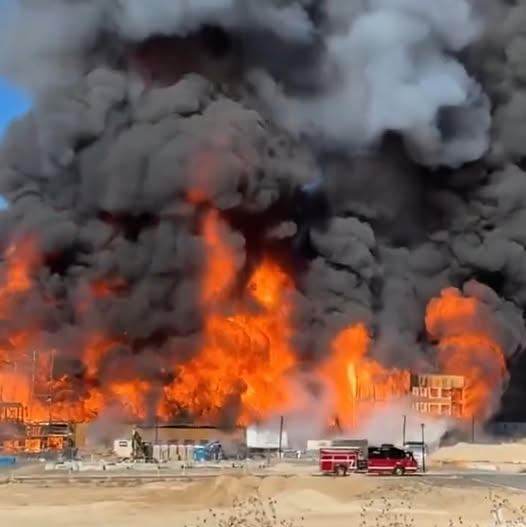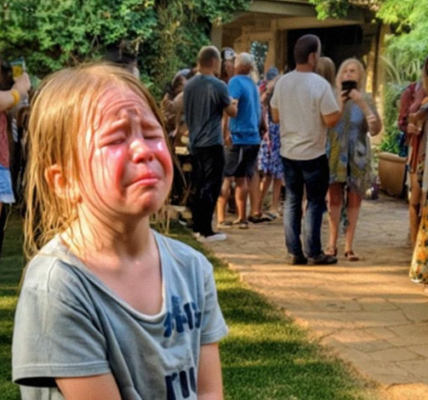A massive 7.7-magnitude earthquake struck the region near the China–Myanmar border,
In the early hours of dawn, as most of Asia still slept under a quiet sky, the earth roared to life with a fury that no one saw coming. A massive 7.7-magnitude earthquake struck the region near the China–Myanmar border, shattering the morning calm and turning peaceful towns into scenes of chaos and ruin within minutes. Experts say it was one of the most powerful quakes to hit the region in decades—a violent reminder of how small humanity becomes when the ground beneath us decides to move.
Residents were jolted awake by a low rumble that quickly grew into a deafening roar. Walls cracked, lights flickered, and seconds later, entire buildings began to crumble. The quake’s epicenter lay just 10 kilometers beneath the surface—alarmingly shallow, and capable of unleashing maximum destruction. Within moments, villages and towns across southern China, northern Thailand, and Myanmar were thrown into panic.
Witnesses in border towns described an apocalyptic scene. “It was like the world was tearing itself apart,” said a man from Yunnan Province. “The ground rippled like waves, and then buildings started falling.” In nearby Myanmar, residents ran barefoot into the streets, clutching children and elderly relatives, as aftershocks rolled beneath their feet. The shaking lasted nearly a minute—long enough to level structures, tear open highways, and collapse bridges.
The U.S. Geological Survey confirmed the quake’s magnitude and shallow depth, warning that more aftershocks were likely in the coming days. Seismologists are calling this a “megathrust event,” possibly linked to increasing tectonic pressure along the Indo-Burmese fault line. The force of the rupture was so immense that tremors were felt as far away as Bangkok, Hanoi, and even parts of Kolkata.
In cities like Chiang Rai and Chiang Mai, buildings swayed violently. Alarms blared as terrified residents rushed outside, many still in nightclothes. Hospitals in several provinces were forced to evacuate patients after structural cracks appeared in their walls. Electricity and internet service were cut off in large areas, leaving millions without communication at the worst possible time.
By late morning, the scale of the devastation began to emerge. Entire blocks in border towns had been flattened. Power plants were damaged. A section of a major highway connecting southern China to Myanmar split open, swallowing cars and cutting off vital supply routes. Dozens of small villages remain unreachable due to landslides and collapsed roads.
Officials in both China and Myanmar confirmed dozens of fatalities within hours, with hundreds more injured. The toll is expected to rise as rescuers reach remote areas. “Everywhere we go, we find people trapped under rubble,” said a member of Myanmar’s emergency response team. “We can still hear voices calling for help.”
Emergency crews have been working nonstop despite overwhelming obstacles. Heavy machinery has been deployed where roads are still passable, while volunteers are digging by hand through twisted metal and concrete. Many rescue teams are racing against time, fearing that aftershocks could bring down what remains of weakened buildings.
Hospitals are overflowing. Makeshift triage centers have been set up in schools and temples. Blood donation drives began within hours of the quake, with citizens lining up despite chaos and confusion. “People are scared but determined,” said a Red Cross worker in Mandalay. “We’ve seen strangers helping strangers, people sharing what little food or water they have.”
As the day wore on, international aid organizations began mobilizing. The United Nations, the Red Cross, and several neighboring countries offered immediate assistance. China’s Ministry of Emergency Management dispatched over 5,000 personnel, including search-and-rescue dogs and medics. Myanmar declared a national emergency, appealing for global help to rebuild communication networks and deliver food, medicine, and shelter to the displaced.
Satellite images released by international disaster agencies show large swaths of land scarred by the quake—collapsed bridges, ruptured fields, and whole communities reduced to rubble. Experts are calling this a humanitarian crisis that could rival past disasters in the region.
The earthquake’s impact wasn’t just physical—it shook the very sense of security among millions. Residents reported feeling multiple strong aftershocks throughout the day, each one reigniting panic. “Every time the ground shakes, we run,” said one mother in Yunnan. “We don’t sleep. We don’t go indoors. We just wait.”
Geologists warn that aftershocks of magnitude 5.0 or higher could continue for weeks. The quake’s shallow depth and proximity to dense population centers made it particularly deadly. “This is a textbook example of a high-impact shallow quake,” said Dr. Lin Wei, a leading seismologist in Beijing. “Even a few seconds of warning would have saved countless lives—but this one struck without a hint.”
For survivors, the next challenge is endurance. With infrastructure crippled, water sources contaminated, and temperatures dropping at night, aid groups are scrambling to distribute essentials. Drone footage shows thousands of people sleeping in open fields, clutching blankets and huddling around fires. Entire families have been displaced, their homes reduced to dust.
The quake’s economic fallout will also be severe. Analysts predict billions in damages to industries and trade routes linking China, Myanmar, and Thailand. With major factories and transport corridors near the border destroyed, supply chains could take months to recover.
Still, amid the destruction, moments of humanity shine through. In a small border town, a firefighter was seen cradling a child pulled from the rubble—a photo that quickly went viral online, becoming a symbol of hope in the face of catastrophe. Elsewhere, monks opened temple doors to the homeless, offering rice and shelter. Local radio stations broadcast continuous safety updates, powered by generators and manned by volunteers.
The Chinese and Myanmar governments have vowed full cooperation in the rescue effort, pledging to rebuild together. President Xi Jinping expressed condolences to affected families and promised that “no village will be left behind.” Myanmar’s government, struggling under limited resources, called for unity, urging citizens to “stand strong and care for one another.”
But scientists remain uneasy. Some experts warn that this earthquake could signal the start of a larger seismic chain reaction along the boundary between the Indian and Eurasian plates. Similar patterns preceded the devastating 2004 Indian Ocean earthquake and tsunami. “We cannot rule out the possibility of more major quakes in the region,” said Dr. Wei. “The earth is adjusting—but the process is violent.”
For now, the focus remains on survival. Search teams continue to pull survivors from collapsed homes more than 24 hours after the initial quake, though hope fades with each passing hour. The faint sounds of tapping and cries beneath the rubble drive rescuers to keep digging despite exhaustion.
As night falls again over the shattered borderlands, rescue lights pierce the darkness. Helicopters circle overhead, dropping supplies into isolated areas. Across Asia, prayers and vigils are being held for the victims.
The 7.7-magnitude earthquake has left scars that stretch beyond geography—it has torn at the collective heart of millions who witnessed its wrath. Yet, even in tragedy, a sense of shared humanity endures. People who lost everything are helping others who lost more. Strangers are offering hands, food, and hope.
This disaster is a grim reminder of how fragile life can be when nature asserts its power. But it’s also a testament to resilience—to the unbreakable will of communities that refuse to surrender. The ground may have shifted, but in the ruins, courage rises. And as the world watches, one truth stands clear: in the face of destruction, humanity still holds strong.










